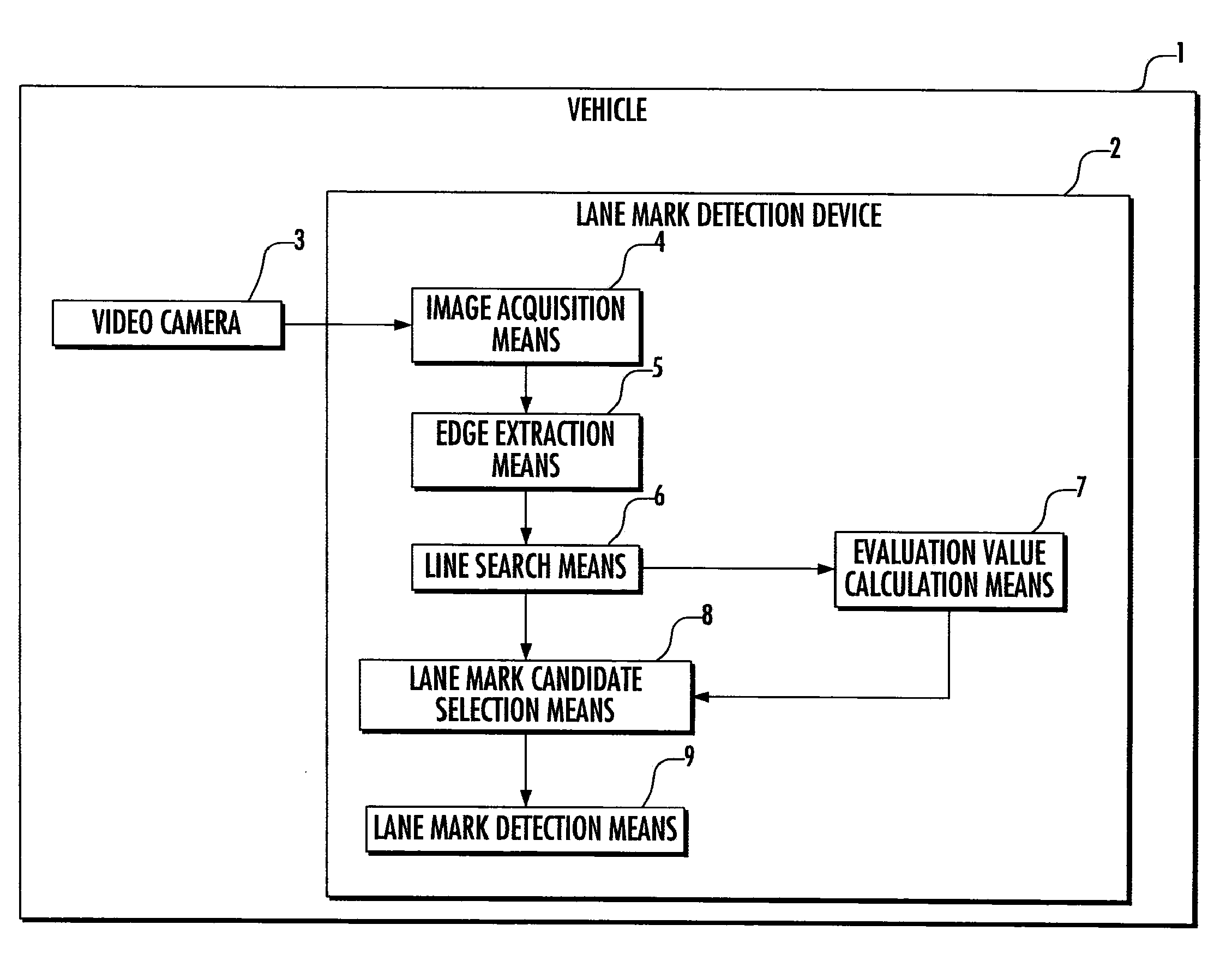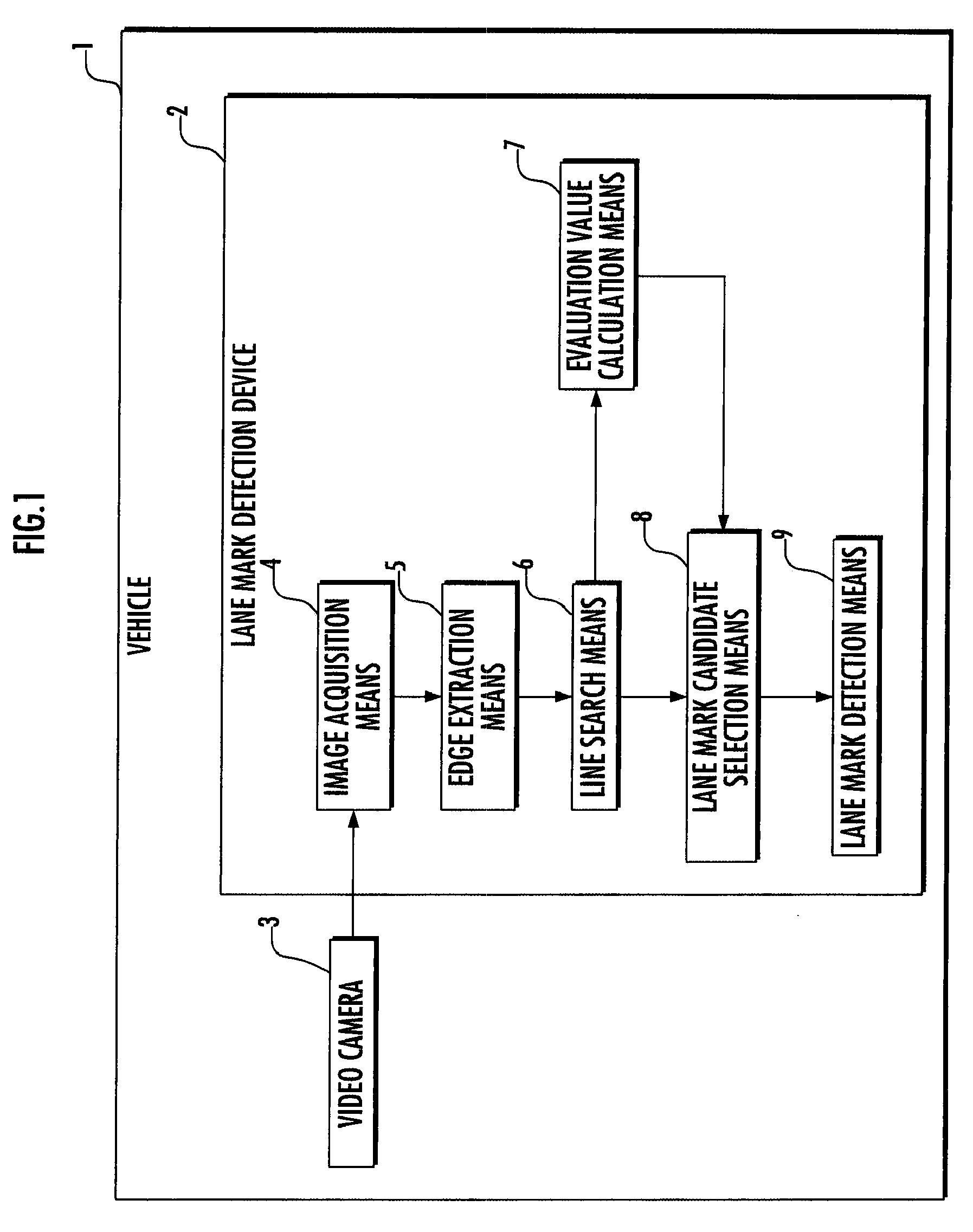Vehicle and lane mark detection device
a detection device and lane mark technology, applied in the direction of instruments, television systems, image enhancement, etc., can solve the problem of incorrectly detecting the object other than the lane mark as a lane mark disadvantageously
- Summary
- Abstract
- Description
- Claims
- Application Information
AI Technical Summary
Benefits of technology
Problems solved by technology
Method used
Image
Examples
first embodiment
[0029]First, a first embodiment of the present invention will be described below with reference to FIG. 1 to FIG. 5.
[0030]Referring to FIG. 1, a lane mark detection device 2 is an electronic unit containing a microcomputer and the like and is mounted on a vehicle 1, including an image acquisition means 4 which acquires a road image via a video camera 3 mounted on the vehicle 1, an edge extraction means 5 which extracts edge points from the acquired image, a line search means 6 which searches the extracted edge points for a line component, an evaluation value calculation means 7 which calculates an evaluation value indicating the degree that each line component searched for approximates the linear lane mark on the road, a lane mark candidate selection means 8 which selects lane mark candidates from the line components according to the calculated evaluation values, and a lane mark detection means 9 which detects a lane mark from the selected lane mark candidates.
[0031]The image acquis...
second embodiment
[0062]Subsequently, a second embodiment of the present invention will now be described with reference to FIG. 6 and FIG. 7. This embodiment is equivalent to the first embodiment except that the vehicle 1 is equipped with a vehicle speed sensor 10 and a yaw rate sensor 11 and that the lane mark detection device 2 includes a moving trajectory estimation means 12, a coordinate transformation means 13, a line classification means 14, and an evaluation value filtering means 15. In the following description, like elements to those of the first embodiment are denoted by like reference numerals and the description thereof is omitted.
[0063]In this embodiment, the vehicle 1 is equipped with the vehicle speed sensor 10 which detects a traveling speed (vehicle speed) of the vehicle 1 and the yaw rate sensor 11 which detects a yaw rate of the vehicle 1.
[0064]In addition, the moving trajectory estimation means 12 estimates the moving trajectory of the vehicle 1 on the basis of the vehicle speed o...
PUM
 Login to View More
Login to View More Abstract
Description
Claims
Application Information
 Login to View More
Login to View More - R&D
- Intellectual Property
- Life Sciences
- Materials
- Tech Scout
- Unparalleled Data Quality
- Higher Quality Content
- 60% Fewer Hallucinations
Browse by: Latest US Patents, China's latest patents, Technical Efficacy Thesaurus, Application Domain, Technology Topic, Popular Technical Reports.
© 2025 PatSnap. All rights reserved.Legal|Privacy policy|Modern Slavery Act Transparency Statement|Sitemap|About US| Contact US: help@patsnap.com



